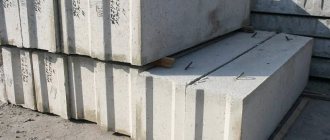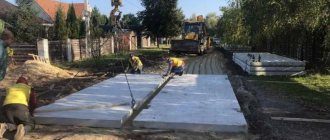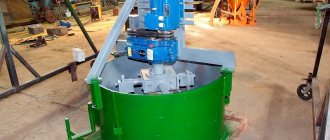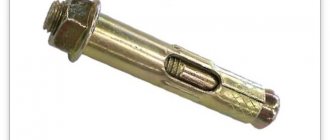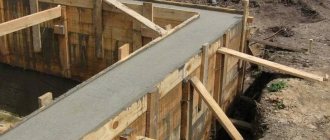Home » Articles » Classification of road rollers
Articles
Road rollers are a separate type of special equipment that is actively used during road construction or repair. Designed to compact certain layers of road surfaces. Road rollers are also used to compact the base under paving slabs or concrete screed. Modern road rollers have a wide variety of shapes and operating principles. All of them can be classified according to certain criteria.
Road roller: types and principle of operation
The first road rollers were used even before the mass introduction of vehicles with internal combustion engines. Primitive massive horse-drawn rollers rolled the roads after leveling and sprinkling with stone material.
Modern road rollers are complex engineering complexes, the efficiency of which makes it possible to create construction sites for the construction of various objects in a short period of time.
Road rollers are classified according to several criteria.
- According to the method of movement: self-propelled - equipped with their own power plant and are able to independently reach an object and move through a compacted medium;
- trailed (as well as semi-trailered) - do not have an engine capable of moving equipment; work in conjunction with a tractor.
- single-axle - available only in the form of semi-trailers;
- single-roller - the working body itself is located in the front part of the machine, and the rear axle is on tires or crawler tracks;
Cam roller
Separately, we can distinguish another classification of road rollers - according to the method of influencing the compacted medium. On this basis they are divided into machines:
- static action;
- vibration.
Rollers with static working bodies compact the soil only due to their mass. When rolling, heavy rollers put pressure on the processed medium and compact it. This type of road roller has low efficiency and is used quite rarely today. However, the simplicity of design and operation has a positive effect on the reliability and maintainability of static machines. The working bodies of vibratory rollers are equipped with a generator of alternating vibrations. This is usually an eccentric shaft with a massive weight. When this shaft rotates, a vibration load is created, which is transmitted to the ground through the working parts. This solution makes it possible, even with a small mass of the roller itself, to quickly and effectively compact the surface being treated.
Today, vibrating rollers have almost completely replaced traditional static models.
This is interesting: How to calculate the volume of crushed stone for backfilling
Device
The main operating part of any roller is the drum. This is a heavy cylinder that acts as a compaction shaft and the front wheels of the machine at the same time. As the roller moves, its mass compacts and levels the soil on which it moves. Soil compaction rollers are equipped with these two parts. One of them, as mentioned above, performs the function of a compacting element, the second, located at the rear, is called a “driven” roller. It is needed to direct the car in one direction or another. The front shaft on older roller models is equipped with a mechanical drive. Modern machines use a hydraulic drive. This is due to the design of modern mechanisms. Almost all of them are vibrational. The vibrator of these mechanisms includes a hydraulic drive. And since the steering system uses a similar system, using a hydraulic drive to operate the front shaft is the optimal solution.
Oleg Abramenko from Tula asks:
I know that when building roads, the quality of compaction of bulk soil and asphalt concrete plays an important role. Tell me, what types of road rollers are there and what is their importance in modern construction?
Our specialist's answer:
The most popular special equipment in highway construction includes various types of road rollers. They tamp and compact the treated areas (soil, asphalt pavements, etc.) with minimal expenditure of money and time. Therefore, they are widely used in many areas:
- during road construction;
- in urban farms;
- when performing railway work;
- in the construction of airfields;
- in the hydraulic engineering industry.
Road roller - purpose
Where are soil compactors used?
- Soil compactors are most often used in the road construction process. They are used to compact the base of the road. When constructing most roads, they try to raise them higher so that the water drains away as quickly as possible. To raise the level of the road, the most common soil is used (clay, loam, etc.), which after leveling must be compacted. It is worth noting that the soil must be compacted layer by layer. The thickness of each layer for compaction should not exceed, in most cases, 30 centimeters. In addition, these rollers are capable of compacting both sand and screenings, which are used for the lower underlying layer.
- In addition to road construction, dirt compactors can often be found during landscaping of local areas. The soil is also compacted before the construction of parking lots and construction sites. In addition, this technique is also used to compact the soil under paving slabs.
- Recently, lightweight soil rollers can increasingly be found even indoors. They began to be actively used in large hangars and industrial premises. These rollers are used to compact the same soil. Only in buildings the soil is compacted under the screed. For large spaces, soil compactors are the easiest and fastest way to compact soil.
Design features
Experts identify several classifications of road equipment, taking into account the design of rollers and the characteristics of their working elements.
- Depending on the number of axes, one-, two- and three-roller systems are distinguished. Single-drum rollers are used during pothole repairs, creating parks and landscaping projects. Double-rollers compact asphalt and gravel well. Three-rollers are considered the most powerful, capable of working with almost any material: from crushed stone to sand. They are even used on bridges and overpasses.
- Based on the type and number of rollers used to compact the road surface, rollers are classified into pneumatic, lattice, cam, smooth roller and universal (combined). Lattice ones are ideal for working in areas where there are solid formations in the ground that need systematic elimination. Cam rollers are capable of giving the treated surface a more dense structure. Pneumatic equipment resembles wheeled machines; with its help, it is convenient to compact an embankment and form a durable hermetic coating.
The cost of equipment with different configurations varies and sometimes greatly. For example, the price of an XCMG road roller with pneumatic wheels will be different than the cost of a single-drum vibratory roller or a compact mini roller.
Pneumatic tire models - advantages of use
Equipment with pneumatic tires that act as rollers provides optimal pressure when compacting materials with a high content of lime and other binding components. It can be used to compact the intermediate and upper layers of roads. Pneumatic tire models are effective in places where very dense compaction is not required, and high productivity is most important. For example, these machines are popular for compacting large areas for further laying of paving stones.
To purchase a road roller, it is advisable to contact a company that offers only high-quality equipment from reliable and trusted manufacturers.
Weight and size
According to these indicators, machines are divided into 3 types:
- lungs
. Equipment of this class weighs no more than 6 tons, and the distributed load does not exceed 40 kN/m; - average
_ They weigh 6-10 tons, the distributed load is 40-60 kN/m. The power of power units that equip middle-class special equipment is 20-30 kW; - heavy
. These are machines equipped with high-power motors (more than 30 kW). The load they distribute exceeds 60 kN/m.
Lightweight rollers have found application in the construction of sidewalks, as well as areas not designed for heavy loads. This technique is also used in the construction of other road facilities for the purpose of preliminary compaction of the surface. Using the second type of equipment, the surface of various roads is compacted. Still others are suitable for compacting any type of surface - asphalt or asphalt concrete, as well as layers of crushed stone and gravel.
Where can I order soil compaction services?
Today, there are a large number of companies that rent out compactors. However, most of these companies own only one skating rink. Due to the fact that soil compaction is not a very popular service, such companies do not buy soil compactors of various configurations.
Our company also rents out compactors. But we always have several skating rinks in stock, which are completely different from each other in all respects. And for each individual task it is necessary to select a separate configuration. If you are interested in soil compaction services, give us a call. We are always ready to select the optimal configuration of the skating rink for the specific service ordered.
Types and types of skating rinks:
Rollers are divided into several categories, the main of which are:
– type of working body;
– number of axes;
– method of work and movement;
– number of rollers.
According to the type of working body, they are distinguished:
– smooth drum rollers . They have wide metal wheels (rollers) with a smooth surface, designed for laying asphalt and asphalt-concrete pavements. They allow you to get a smooth and neat surface;
– cam rollers . They have small protrusions on the wheels (rollers), which, while the roller is moving, penetrate into the upper layers of the soil and break up the lumps present in it, mix the bulk material, which contributes to its compaction. Their purpose is to work with loose embankments no more than 30 cm high;
– lattice rollers . The cylinders (rollers) are equipped with a metal grid, which during operation crushes large clods and various soil elements, increasing the compaction of the coating. Suitable for all types of soils;
– plate rollers . They have wheels (rollers), on the rim of which special “shoes” are attached using hinges. The main purpose is layer-by-layer laying and compacting of soil on embankments;
– ribbed rollers . The rim of their cylinders (rollers) is equipped with ribs. Like plate ones, they are used for layer-by-layer laying of soil;
– pneumatic rollers . The rollers are replaced with wheels assembled in a package with pneumatic tires. Used for laying asphalt and asphalt concrete pavement. Because the wheels have gaps; when moving, they leave behind an uncompacted seam, which can be avoided by the asymmetrical arrangement of the cylinders (rollers);
– combined rollers. This technique includes two types of rollers: for example, the front one is cam or lattice, and the rear one is smooth, etc.
According to the number of axles, rollers are divided into:
– single-axle rollers;
– biaxial rollers;
– triaxial rollers.
According to the principle of operation, rollers are:
– statistical rollers . Dense laying of the road surface is possible due to the large mass of equipment, which can be increased by attaching additional concrete or metal structures to the roller. The use of such rollers is advisable in places where it is impossible to use vibration-type equipment: overpasses, overpasses, residential areas, etc.;
– vibrating rollers . The pressure on the laying material is produced by the mass of the roller itself and the vibration of the drum, which is converted into a dynamic linear load. The objectives of this type of equipment are to stabilize, level and compact a soil embankment or asphalt concrete mass in a shorter number of passes. As a result, the desired type of coverage occurs 1.5-2 times faster than when using statistical machines. The quality of equipment operation is determined by such characteristics as the range of vibration of the drum and its frequency.
According to the method of movement, rollers are divided into:
– hand rollers . They are a smooth roller type of equipment, the width of the cylinder can reach up to 1 meter. Main purpose: laying asphalt concrete or asphalt pavement on small sections of the road (pedestrian and bicycle paths, steam areas, playgrounds, etc.). Can be statistical or vibrational;
– trailed rollers . This is a single-drum roller type, the cylinder (wheel) of which can be smooth or ribbed. It is driven by a tractor, for which it acts as a trailer. Used for layer-by-layer laying of soil coverings. Like hand-held rollers, trailed rollers can be vibratory or static;
– self-propelled rollers . The movement of a self-propelled roller is carried out using its existing engine and transmission.
According to the number of rollers, rollers are divided into:
– single-drum rollers . The machine is equipped with one axle, the rear part has pneumatic tires. A large drum is attached to the axis, the presence of which sometimes makes it difficult to overcome high obstacles. The machine is used for construction work, road construction, making small compactions, leveling small areas (pedestrian paths, sidewalks, etc.), assessing surface evenness;
– twin-drum rollers . The equipment is equipped with two drums located on the front and rear axles, respectively. Their task is to drive the rollers. The application is suitable for smooth and dense surfaces - asphalt, concrete, because When working on earth embankments, the required grip is not always provided. The maneuverability of the equipment is low, because it does not have wheels or tires, but the compaction rates are very high.
– three-drum rollers . They have three rollers, differing in location: the rollers are at an equal distance from each other, or two rollers are located side by side, and the third is independent.
According to their intended purpose, rollers are:
– soil compactors . Used for compaction and stabilization of moving, loose coatings (sand, crushed stone, clay, rock);
– asphalt rollers . Level and compact hot and/or cold mixtures of asphalt or asphalt concrete.
By weight, rollers are divided into:
– light rollers . The weight of the machine does not exceed 4 tons, they are used mainly for work on small and narrow areas, less often - for pothole repair of road surfaces;
– heavy rollers . The roller weighs more than four tons and is intended for construction, capital and/or maintenance of roads. Provide high-quality soil and asphalt concrete coverage regardless of the volume of work performed.
This is interesting: What is the jet-injection method of pothole repair?
Based on the number of rollers, soil compactors can be classified into the following types:
- Single-roller - has only one working element - the roller. This special equipment is equipped with conventional wheels on one side and a cylindrical drum on the other.
- Double roller – equipped with two rollers. One roller is placed at the front, the other at the rear. This roller does not have wheels. The efficiency of such a roller is much higher than that of a single-drum roller.
- The three-drum compactor is the most efficient and most productive soil compactor. It has three rollers at once. Two rollers are located side by side, one after the other, the third is in the opposite direction. Three-drum rollers are very heavy and huge in size.
Application of the roller:
A road roller is an indispensable type of equipment in industries such as construction and repair of road surfaces. It allows you to form an even layer of the roadway from the base and solid material, along which cars and pedestrians can move freely and comfortably. The durability of a highway or pedestrian area depends on how high-quality, dense and reliable the formed layer is.
In addition to the road construction and repair industry, rollers are used in:
- – industrial;
- – urban;
- – railway;
- – hydraulic engineering;
- – airfield construction.
With their help, sites are prepared for the construction of residential buildings or industrial structures, courts and stadiums, parks and bicycle paths, sidewalks and pedestrian areas, airfields and railway tracks. They are indispensable in the construction of earthen embankments, watershed dams and other ground structures.
Hydraulic engineering is another industry where rollers are widely used. With their participation, dams and power plant buildings, tunnels and pumping stations, spillways and water intakes, as well as many other structures in this industry are built.
Such a wide range of uses for the roller is explained by the fact that this equipment meets the highest quality standards for the work performed, is easy to use and is economically beneficial for almost any enterprise.
Purpose and area of use of vibratory rollers
Vibratory rollers are widely used in road construction and pothole repair. The mechanisms are also applicable when performing various excavation and leveling works. This could be:
- when constructing a blind area, when pouring foundations for various structures (small vibratory plates and vibratory rollers);
- when performing interior work on installing floor screeds;
- when arranging sidewalks and recreation areas in landscape design;
- when preparing basements.
- in preparation for laying utility networks in trenches and pits.
Sealing method
The following types of rollers are distinguished according to the compaction method:
- static
_ The road surface is compacted due to the vehicle's own weight. The heavier the equipment, the higher the quality of layer compaction; - vibration
_ This is the most modern type of skating rink. Compaction of the road surface is achieved due to two factors at once - the vehicle’s own weight and the vibration of the working element. To achieve high-quality compaction, vibrating machines require much fewer passes than static ones. Vibratory rollers are used to build not only high-class roads, but also airfields, ports, and other facilities whose road surfaces are subject to high loads during operation.
When choosing a road construction machine for compacting asphalt, asphalt concrete or soil, it is important to take into account the characteristics of the equipment and its design features. This will allow you to choose the right roller for a specific task.
Classification by number of axles
Based on this parameter, models are distinguished:
- Uniaxial. Suitable for compacting the base of a road “pie”.
- Biaxial. They have the same applications as single-axle machines.
- Triaxial. Designed for final leveling. Three-axle models, thanks to their significant mass and its rational distribution over the plane, are able to eliminate even minor unevenness on the surface of a road or site.
Rink parameters:
The main parameters of the quality of the skating rink include the following indicators:
– type of skating rink;
– operating weight (with and without ballast);
– roller diameters;
– width of the rollers;
– linear pressure of the rollers;
– number and diameter of tires, tire pressure (for pneumatic rollers);
– width of the compacted strip;
– movement speed (working and transport);
– minimum turning radius;
– maximum surmountable slope;
– lateral stability angle;
– driving force of the vibration exciter (for vibrating rollers);
- engine's type;
- engine power;
– transmission type;
– overall dimensions (length, width, height of the skating rink with and without a cabin or awning);
– skating rink base;
– 80% service life before the first major overhaul and limit state criteria;
– sound level at the operator’s workplace;
– level of external noise;
– vibration parameters at workplaces and controls;
– smokiness of the exhaust gases of the roller engine;
– release of harmful substances with exhaust gases from the engine exhaust system.
Site Map
Demand factor 724
Practical advice when operating the skating rink
To achieve a high-quality maximum layer density, it is necessary to adhere to certain rules in the operation of mechanisms. This:
- operating speed of the mechanism,
- number of passes of the mechanism.
According to practice, the lower the operating speed of the vibration mechanism, the higher the pressure applied to the operating points. The optimal operating speed is 1.5-2 km/h. At this speed, in 4-8 passes it is possible to efficiently compact a layer of standard density. Compaction can be carried out at a high speed of 5-6 km/h, but compensated for by a large number of penetrations in the same time. This mode is applicable if it is necessary to achieve a low final layer density.
When working with light soils (sand, sandy loam, loose soil), the number of penetrations is reduced to 3-5 times, and when developing granite rocks, wet loams, it increases up to 10 times.
Joint vibration
The extra weight inside each drum spins at a constant speed of about 4,000 rpm and causes the drums to bounce ever so slightly. At the same time, the roller slowly moves along the road, crushing its surface with a force of 7,500 pounds. The front drum does the first tamping. The rear drum follows the trail of the front drum and compacts further.
How to determine which skating rink is suitable for rent
Determination by area of work
When choosing special equipment, you should focus on the area and volume of work. Light and medium types of rollers are suitable for paving sidewalks, sports fields, and parking lots when creating a compacted layer of a given thickness. They are much more reliable than manual models. If there are increased requirements for the degree of compaction of the mixture, heavy road rollers should be selected.
According to the quality of the compacted coating
If work is carried out on a large site, and the surface needs to be as dense as possible, you should give preference to vibrating rollers. They not only create pressure on the layers, but also act on the material to a much greater depth, creating dynamic shocks.
By type of road surface
Depending on the material used, you can select the following types of rollers: smooth or pneumatic for asphalt and asphalt concrete layers, cam rollers for soil compaction. Taking into account the type of soil, you can also order the rental of a skating rink on the website katok555.ru with a grid drum.
Conclusion
The variety of rollers is so great that when choosing the optimal model, you should take into account all the conditions at the site. In our company you can rent all the main types of special equipment from well-known manufacturers: Hamm, Ammann and many others. If you have difficulty choosing, be sure to call us. We will select the optimal roller model for your purposes, draw up a contract and deliver the equipment to the site. The fleet has a large selection of special equipment, which undergoes regular maintenance and is always in good condition.
By type of working equipment
The main working tool of the roller is a cylindrical roller (drum); according to the configuration of its working surface, rollers can be:
- smooth roller;
- segmented - with a smooth drum and special segments on the rim;
- lattice - rolling drum - welded or cast lattice metal structure. Such rollers level frozen soil, soil with dense, rocky inclusions;
- cam - with protrusions on the roller, ensuring uniform compaction of the layers and connection between them;
- compact - with symmetrically located cams welded to the roller cylinder;
- pneumatic - with rollers made of several pneumatic wheels;
- combined - equipped with several working rollers, interchangeable if necessary;
- ringed-spurred.
Varieties
Soil compaction rollers can be divided into static and vibrating.
The former compact the soil only with their weight. The second type of roller device includes a vibration device.
But this is only a classification based on the type of impact on the ground. In fact, there are many more varieties. Rollers are also distinguished by the type of rollers. So, they can be cam or pneumatic, combined and lattice. Pneumatic rollers can handle any type of soil. Cam machines are used mainly for compacting pliable types of soil. It can be clay, even mixed with gravel. Sand and wet soil are not ideal areas for pad rollers.
Reviews of different types of mechanisms
Rollers of all the above types are an indispensable tool on any construction site. It is not surprising that they managed to collect a large number of reviews from builders. Among them there are both positive and negative. Negative reviews most often arise from the use of the machine where its use is unacceptable. Older equipment such as static rollers are often criticized for their unreliable vibrator performance. At the same time, you need to understand that it is advisable to use such machines only in some situations, and in them there is no worthy replacement for them.
Static
Static soil compaction rollers are used less and less; they have been replaced by new vibrating compaction devices that consume fuel more economically. But static ones will not leave the arsenal of construction companies for a long time.
The reason these machines are so durable is that they can be used where vibrations of any type are highly undesirable. For example, when laying asphalt on a bridge or overpass, only such rollers are used, as this meets safety requirements.
Also, mechanisms of this type leave behind more even ground. Therefore, they are used in cases where an ideal surface is important.
Of the obvious disadvantages, it is worth mentioning the high fuel consumption. The weight of the roller is quite large, and more passes are required to achieve a high-quality result.


